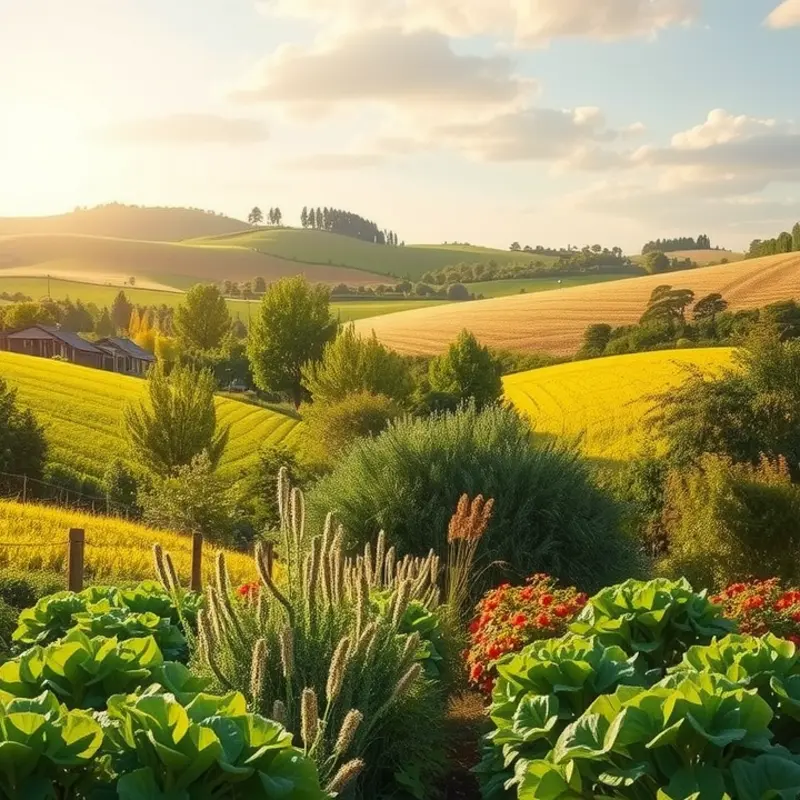Freezing fresh fruits not only extends their shelf life but also helps in minimizing food waste and managing home food storage effectively. Whether you’re planning to enjoy a smoothie, bake a pie, or simply want a nutritious snack, understanding how to properly freeze fruits is essential. By following safe and easy-to-implement methods, you can savor the taste and benefits of fresh produce all year long. Dive into these practical techniques that make food management a breeze!
Preparing Fresh Fruits for Freezing

Before freezing, selecting the freshest and ripest fruits is your first task. Aim for fruits that are firm, vibrantly colored, and free from blemishes. The quality of the fruit at this stage directly impacts the ultimate taste and texture upon thawing.
Once selected, wash the fruits thoroughly under cool, running water. This step removes not only visible dirt but also any pesticides or contaminants that might be lingering on the skin. Use a colander to rinse smaller fruits like berries, which are delicate and can bruise easily. Larger fruits, such as apples and pears, can be washed by rubbing gently with your hands or a soft brush.
Inspect the fruits closely after washing, removing any blemished or damaged parts. Cutting away bruises ensures that any spoilage does not spread, preserving the quality of the remaining fruit.
After cleaning, prepare the fruits by peeling, coring, or cutting them into smaller pieces, depending on the fruit type. For example, peaches, apples, and pears maintain their quality better when peeled before freezing. Bananas, on the other hand, can be sliced without peeling. Remember, smaller pieces freeze faster, which can help maintain texture and nutrients.
Blanching is a crucial step for certain fruits like apples and peaches. This process, which involves a quick immersion in boiling water followed by immediate cooling in ice water, helps preserve color and flavor. It also deters enzyme activity that could cause spoilage. A brief 30-second blanch is generally sufficient for these fruits.
Some fruits like berries and bananas do not require blanching and can be frozen raw. Ensure these fruits are dry before placing them in the freezer to prevent ice crystals, which can compromise texture.
Maintaining a consistent temperature in your freezer is vital for optimal results. Set the temperature to 0°F (-18°C) or below. Fluctuations can cause freezer burn, affecting taste and texture. For tips on maintaining an eco-smart kitchen and effective storage, consider exploring this guide on eco-smart kitchen storage.
By carefully selecting, washing, cutting, and optionally blanching fruits, you can significantly improve their quality after freezing. This preparation ensures vibrant, flavorful fruit that’s ready to enhance any dish even months after preservation.
Effective Freezing Techniques

After preparing your fruits, applying the right freezing technique is crucial to maintaining their quality. Flash-freezing is often the best method, particularly for soft fruits like berries, peaches, and grapes. Spread the fruits in a single layer on a baking sheet, ensuring each piece has enough space to freeze independently. Once the fruit is solid, which usually takes about two to four hours, transfer it to airtight containers or freezer bags. This step prevents the fruit from clumping together and allows you to easily access individual portions later.
For added convenience, remember to label your containers with the fruit’s name and the date of freezing. This practice not only helps with organization but also ensures you use the fruit within its optimal storage period, which is generally up to a year. When dealing with limited freezer space, efficient organization is key to success.
Foods frozen without proper air exclusion are prone to freezer burn. This condition occurs when cold, dry air causes moisture loss, leading to altered flavors and textures. To mitigate this risk, remove as much air as possible from storage containers. Vacuum sealing is an ideal method, but manually pressing out air from bags also produces solid results.
For fruits like berries that might benefit from added sweetness and texture preservation, consider the sugar syrup method. To do this, dissolve sugar in water, use a ratio of about four parts water to one part sugar, then pour the syrup over the fruit before freezing. This step helps maintain the fruit’s integrity upon thawing, providing extra flavor and a smoother texture.
Managing your frozen fruit supply effectively extends beyond just preservation. Regularly review what you have stored. Rotating your stock—much like rotating pantry items—ensures older fruits are used first. This reduces waste and keeps your supplies fresh.
For anyone looking to minimize food waste and embrace sustainable storage practices, understanding these techniques is crucial. Integrating these practices into your kitchen habits can also complement a broader low-waste lifestyle, as discussed in this guide on low-waste cooking prep.
By mastering effective freezing techniques, you’re not only preserving the taste and texture of your fruits but also optimizing your food management skills. With these strategies, reduce waste and enjoy the pleasure of seasonal fruits throughout the year, regardless of the weather outside.
Final words
Freezing fresh fruits is a simple yet effective way to safeguard their quality and minimize food waste. By preparing fruits thoughtfully and utilizing proper freezing methods, you ensure that your fruits remain delicious and nutritious for an extended period. Take the time to label your containers and maintain optimal freezing temperatures to enjoy the fruits of your labor throughout the year. Simple practices can lead to significant reductions in grocery bills and increased meal options. Embrace the power of freezing in your kitchen for a more organized and efficient food management approach.







